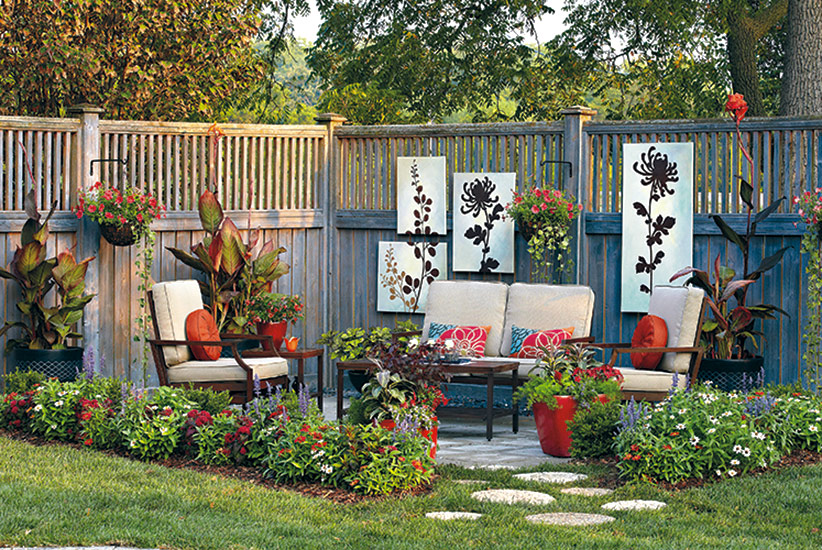Outdoor gardens represent a harmonious blend of nature and human creativity, where landscapes are transformed into living works of art. Beyond their aesthetic appeal, gardens serve as sanctuaries that connect us with the natural world, offering myriad benefits to our physical, mental, and emotional well-being. This article explores the multifaceted realm of outdoor gardens, delving into design principles, ecological considerations, and the profound impact they have on individuals and communities.
Evolution of Garden Design
The history of garden design is as diverse as the cultures that cultivated them. Ancient civilizations, from the Hanging Gardens of Babylon to the serene gardens of Kyoto, exemplified early efforts to tame and beautify outdoor spaces. In Europe, the formal gardens of Versailles and the English landscape gardens of Capability Brown introduced structured layouts and naturalistic aesthetics, respectively, shaping the principles of garden design that persist today.
Principles of Garden Design
Modern garden design integrates artistic vision with scientific principles to create cohesive and functional outdoor spaces. Key considerations include:
- Spatial Planning: Effective use of space to create balance and harmony, considering elements such as pathways, focal points, and zones for different activities.
- Plant Selection: Careful selection of plant species based on climate, soil conditions, and aesthetic preferences. This includes understanding plant growth habits, seasonal variations, and the ecological impact of chosen species.
- Hardscape Integration: Incorporation of non-plant elements like pathways, patios, water features, and sculptures to enhance functionality and visual interest.
- Sustainability: Emphasis on water conservation, use of native plants to support local biodiversity, and eco-friendly gardening practices such as composting and natural pest control.
Ecological Considerations
Outdoor gardens play a crucial role in ecological conservation and sustainability. They provide habitats for pollinators and wildlife, contribute to air purification, and mitigate urban heat island effects. Sustainable gardening practices, such as xeriscaping and permaculture, promote water efficiency and soil health, reducing the environmental footprint of garden maintenance.
Therapeutic Benefits of Gardens
The therapeutic benefits of spending time in outdoor gardens are well-documented. Exposure to nature has been shown to reduce stress, lower blood pressure, and improve overall mental health. Gardens serve as retreats for relaxation and contemplation, offering a respite from the fast-paced urban environment. Therapeutic garden design principles, such as sensory stimulation through color and fragrance, accessibility for individuals with disabilities, and inclusion of healing plants, enhance these benefits.
Community and Social Impact
Gardens have the power to strengthen communities and foster social connections. Community gardens promote shared responsibility and collaboration among neighbors, while public gardens serve as educational resources and cultural landmarks. Urban greening initiatives transform neglected spaces into vibrant community hubs, improving quality of life and promoting civic pride. Moreover, gardens can be catalysts for environmental education, teaching sustainability practices and fostering appreciation for the natural world among diverse audiences.
Challenges and Innovations
Despite their numerous benefits, outdoor gardens face challenges such as climate change, urbanization, and resource constraints. Innovations in garden design and management address these challenges through:
- Climate-Adaptive Design: Incorporating resilient plant species and irrigation systems that respond to changing climate patterns.
- Vertical and Rooftop Gardens: Maximizing limited urban space by utilizing vertical surfaces and rooftops for greenery, enhancing urban biodiversity and reducing heat island effects.
- Smart Gardening Technologies: Integration of sensors, automated irrigation systems, and data analytics to optimize water use and plant health management.
The Future of Outdoor Gardens
Looking ahead, the future of outdoor gardens promises continued innovation and adaptation to meet evolving environmental and societal needs. Trends such as biophilic design, which integrates natural elements into built environments to enhance well-being, are expected to gain prominence. The concept of edible landscapes, where gardens not only beautify but also provide fresh food, aligns with growing interest in sustainable living and local food production.
Conclusion
In conclusion, outdoor gardens embody the intersection of art, science, and human connection with nature. They enrich our lives through their beauty, provide essential ecological services, and contribute to our physical and mental well-being. By embracing principles of design, sustainability, and community engagement, gardens serve as dynamic spaces that evolve with the needs of society. As stewards of these living landscapes, garden designers and enthusiasts play a pivotal role in creating environments that inspire, nurture, and sustain both individuals and communities.
Through thoughtful planning, innovative practices, and a deep appreciation for the natural world, outdoor gardens continue to thrive as enduring expressions of human creativity and our enduring relationship with nature.










